Showing Spotlights 849 - 856 of 2785 in category All (newest first):
 An recent analysis of the combined effect of nanoparticles and substrates on the concentration of mobile ions in liquid crystals considers both 100% pure and contaminated with ions substrates and nanoparticles. The results could be very useful for engineers trying to apply nanotechnology to liquid crystal devices. Specifically, the control of mobile ions in liquid crystals by means of nanoparticles and substrates of the cell tailored for specific applications - liquid crystal displays, light shutters, switches, modulators, etc.
An recent analysis of the combined effect of nanoparticles and substrates on the concentration of mobile ions in liquid crystals considers both 100% pure and contaminated with ions substrates and nanoparticles. The results could be very useful for engineers trying to apply nanotechnology to liquid crystal devices. Specifically, the control of mobile ions in liquid crystals by means of nanoparticles and substrates of the cell tailored for specific applications - liquid crystal displays, light shutters, switches, modulators, etc.
Mar 8th, 2017
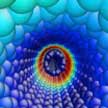 Carbon nanotubes (CNTs), by possessing a uniquely large disparity among its intertube and intratube interaction strengths, have been established as ultralow friction nanostructures and are serving as testbeds for tuning frictional response. In new woirk, researchers now have revealed the phononic origins of friction in CNT oscillators. This work, for the first time, provides a precise connection between individual phonon mode scattering and friction force.
Carbon nanotubes (CNTs), by possessing a uniquely large disparity among its intertube and intratube interaction strengths, have been established as ultralow friction nanostructures and are serving as testbeds for tuning frictional response. In new woirk, researchers now have revealed the phononic origins of friction in CNT oscillators. This work, for the first time, provides a precise connection between individual phonon mode scattering and friction force.
Mar 6th, 2017
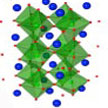 Complex oxide perovskite have been intensively researched for over half a century for their intriguing high temperature superconductivity, thermoelectric, ferroelectricity, colossal magnetoresistance. However, their large band gaps limit their interaction with visible photons. In new work, researchers propose transition metal perovskite chalcogenides (TMPCs) as a new class of versatile semiconductors for optoelectronic applications.
Complex oxide perovskite have been intensively researched for over half a century for their intriguing high temperature superconductivity, thermoelectric, ferroelectricity, colossal magnetoresistance. However, their large band gaps limit their interaction with visible photons. In new work, researchers propose transition metal perovskite chalcogenides (TMPCs) as a new class of versatile semiconductors for optoelectronic applications.
Feb 28th, 2017
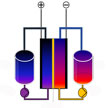 Flow batteries are regarded as one of the most promising energy storage technologies for stationary large-scale storage because the power capability and the energy storage capability of these storage systems can be sized independently, which benefits load balancing, peak shaving, power conversion and stand-alone power system. As an emerging rechargeable battery technology, lithium redox flow batteries (Li-RFB) represent an important advance which is distinct from conventional solid-state rechargeable batteries. Researchers have now demonstrated an all-metallocene-based non-aqueous redox flow battery with stable cycling performance and comparable energy density with current related energy storage technologies.
Flow batteries are regarded as one of the most promising energy storage technologies for stationary large-scale storage because the power capability and the energy storage capability of these storage systems can be sized independently, which benefits load balancing, peak shaving, power conversion and stand-alone power system. As an emerging rechargeable battery technology, lithium redox flow batteries (Li-RFB) represent an important advance which is distinct from conventional solid-state rechargeable batteries. Researchers have now demonstrated an all-metallocene-based non-aqueous redox flow battery with stable cycling performance and comparable energy density with current related energy storage technologies.
Feb 27th, 2017
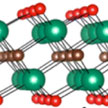 Next-generation electronics will be based on two-dimensional semiconductors, which have a significantly higher resistance than conventional silicon-based electronics. This development is significantly limited by the high contact resistance between the metal electrode and the 2D semiconductor. To minimize the energy dissipation and improve the device performance, it is critical to reduce the contact resistance. Researchers have now shown that MXenes, a class of 2D metal carbides or nitrides, can achieve low contact resistance with 2D semiconductors.
Next-generation electronics will be based on two-dimensional semiconductors, which have a significantly higher resistance than conventional silicon-based electronics. This development is significantly limited by the high contact resistance between the metal electrode and the 2D semiconductor. To minimize the energy dissipation and improve the device performance, it is critical to reduce the contact resistance. Researchers have now shown that MXenes, a class of 2D metal carbides or nitrides, can achieve low contact resistance with 2D semiconductors.
Feb 22nd, 2017
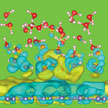 Researchers have shown that evaporation from the surface of a variety of nanostructured carbon materials can be used to generate electricity: the evaporation driven water flow in nanoporous carbon film converts ambient thermal energy into electricity via the water molecules' interaction with the carbon material. The team fabricated their device from a sheet of carbon black and two electrodes made from multi-walled carbon nanotubes. When inserted into deionized water, an open-circuit voltage between the two electrodes is generated.
Researchers have shown that evaporation from the surface of a variety of nanostructured carbon materials can be used to generate electricity: the evaporation driven water flow in nanoporous carbon film converts ambient thermal energy into electricity via the water molecules' interaction with the carbon material. The team fabricated their device from a sheet of carbon black and two electrodes made from multi-walled carbon nanotubes. When inserted into deionized water, an open-circuit voltage between the two electrodes is generated.
Feb 21st, 2017
 Paper electronics - putting flexible electronic sensors and other circuits on regular paper - have the potential to cut the price of a wide range of medical tools, from point-of-care diagnostic tests to portable DNA detectors. In new work, researchers have now shown an integration strategy to rationally design an ultra-low cost health monitoring device, a Paper Watch, using recyclable household materials: non-functionalized papers.
Paper electronics - putting flexible electronic sensors and other circuits on regular paper - have the potential to cut the price of a wide range of medical tools, from point-of-care diagnostic tests to portable DNA detectors. In new work, researchers have now shown an integration strategy to rationally design an ultra-low cost health monitoring device, a Paper Watch, using recyclable household materials: non-functionalized papers.
Feb 16th, 2017
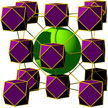 Metal-organic frameworks (MOFs) are regarded as a new class of porous materials with significant prospects for addressing current challenges pertinent to energy and environmental sustainability. Due to their unique structure design and tunability, MOFs offer great potential for their effective integration and exploration in various sensing applications. Researchers have demonstrated this by developing an advanced sensor for the detection of hydrogen sulfide at room temperature, using thin films of rare-earth metal based MOF.
Metal-organic frameworks (MOFs) are regarded as a new class of porous materials with significant prospects for addressing current challenges pertinent to energy and environmental sustainability. Due to their unique structure design and tunability, MOFs offer great potential for their effective integration and exploration in various sensing applications. Researchers have demonstrated this by developing an advanced sensor for the detection of hydrogen sulfide at room temperature, using thin films of rare-earth metal based MOF.
Feb 10th, 2017
 An recent analysis of the combined effect of nanoparticles and substrates on the concentration of mobile ions in liquid crystals considers both 100% pure and contaminated with ions substrates and nanoparticles. The results could be very useful for engineers trying to apply nanotechnology to liquid crystal devices. Specifically, the control of mobile ions in liquid crystals by means of nanoparticles and substrates of the cell tailored for specific applications - liquid crystal displays, light shutters, switches, modulators, etc.
An recent analysis of the combined effect of nanoparticles and substrates on the concentration of mobile ions in liquid crystals considers both 100% pure and contaminated with ions substrates and nanoparticles. The results could be very useful for engineers trying to apply nanotechnology to liquid crystal devices. Specifically, the control of mobile ions in liquid crystals by means of nanoparticles and substrates of the cell tailored for specific applications - liquid crystal displays, light shutters, switches, modulators, etc.
 Subscribe to our Nanotechnology Spotlight feed
Subscribe to our Nanotechnology Spotlight feed





